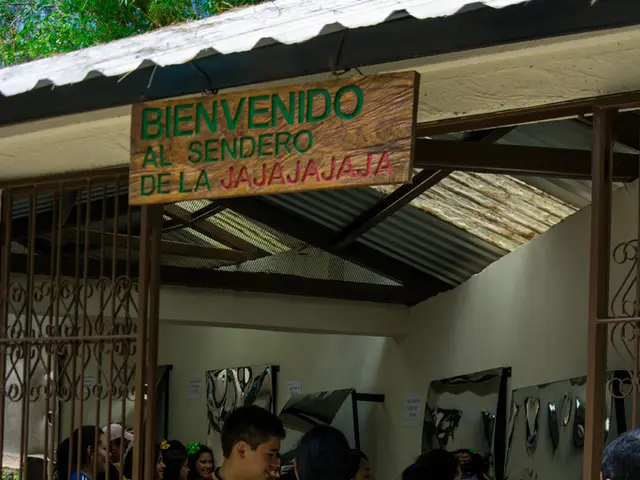Transforming the Future for Pelagic Thresher Sharks through Novel Earning Methods
The pelagic thresher shark, famously known for its long, whip-like tail, is a migratory species generally found in tropical and subtropical Indo-Pacific waters. Sadly, this majestic creature is facing a significant population decline, with some estimates suggesting a staggering decrease of up to 79% within the last three generations. This decline is particularly notable in Indonesia, the world's largest shark fishing nation, where the pelagic thresher population has taken a devastating hit, plummeting over 83% between 2002 and 2014 due to both intentional and unintentional catches in local fisheries.
Responding to this pressing conservation issue, both regulatory and community-driven efforts are shifting gears. One of the more creative approaches to shark conservation includes introducing alternative livelihoods for local fishers. This strategy not only reduces pressure on shark populations but also provides sustainable income sources for communities reliant on shark fishing, ensuring they remain economically and socially viable.
To test this approach, Indonesia's Alor Archipelago served as a testbed between 2018 and 2023. The initiative aimed to lessen the economic dependency on pelagic threshers by offering alternative income-generating activities, such as small-scale chicken farming, alternative fisheries like tuna and red snapper, and local business opportunities like kiosks for retail goods.
A recently published study on the project's success revealed mixed but generally positive results. Six out of nine participating fishers reported substantial income gains, with some experiencing well over 500% salary growth compared to their pre-intervention earnings. One notable success story was a women's group that generated income via marketable items, like tuna floss and shark-themed woven textiles.
However, despite these triumphs, a handful of participants encountered diminished earnings due to personal challenges, demonstrating that external factors can still impact the effectiveness of such programs.

Political engagement and policy changes also contributed significantly to shark conservation advancements. In 2020, the district government established a decree promoting sustainable management of marine resources by fishermen. In 2022, a formal plan for pelagic thresher conservation was implemented, supported by a revised marine protected area in 2023. Although these measures did not impose a full ban on shark fishing, they reflected a shift in governmental priorities towards marine conservation.
Community involvement proved to be pivotal in the project's success as well. In 2021 and 2022, 36 young shark conservation advocates, known as “champions,” were trained to spread awareness regarding pelagic threshers across Alor. Remarkably, they managed to reach over 1,000 individuals through engaging activities like school visits and radio broadcasts. This outreach resulted in a 100% increase in community knowledge about pelagic threshers, and local pride in protecting these endangered species soared.
Despite some participants still engaging in shark fishing due to societal pressures and financial necessity, community discussions and new agreements were employed to address these violations. Violators faced sanctions, and those encountering financial hardship were compensated.
While the project showed promising reductions in pelagic thresher shark catches, ensuring long-term sustainability remains a significant challenge. Economic pressures and socio-political factors eventually led to a resurgence of catches in the project's later stages. This underscores the ongoing challenges of maintaining long-term compliance with conservation measures, particularly when economic incentives stem from resource extraction.

A key takeaway from this project, believed by the authors, is the necessity of tailoring conservation strategies to meet local needs and contexts. By integrating community feedback, ensuring the feasibility and acceptability of the interventions, we can create sustainable conservation solutions. But for similar initiatives to thrive elsewhere, they will require ongoing support, such as financial assistance, training, and robust governance.
Conservation efforts, until now, have primarily focused on industrial fishing. However, with over 90% of Indonesia's fishing fleet consisting of small-scale artisanal fishers, these communities must also be addressed. To achieve genuine success, it is essential to integrate small-scale fishers into decision-making processes and provide them with sustainable alternatives to shark fishing.
Challenges remain, but the multi-faceted approach demonstrated here serves as a solid foundation for future conservation efforts. By working together and adapting strategies as needed, we can hopefully build upon this platform for advancement.
The study on the Alor Archipelago project noted that some participants continued to face financial difficulties, highlighting the need for more comprehensive solutions to tackle external factors affecting alternative livelihoods.
To combat the threat of extinction, ecotourism could emerge as a viable option for shark conservation in the Global South. Collaborative efforts between governments, NGOs, and local fishers could transform destinations like Indonesia and the Philippines into eco-tourism hotspots, providing income opportunities while promoting shark conservation.
Switching gears from shark fishing, some fishers have diverged towards alternative fisheries, such as tuna and red snapper, helping to alleviate pressure on shark populations. With the global demand for fish growing, promoting sustainable fishing practices could significantly impact the future of both sharks and fishers.
Despite the thresher shark's significant population decline, migration patterns continue to connect populations between Indonesia and the Philippines, preserving hopes of recovery. Protecting migratory routes and ensuring conservation measures cross international borders could help safeguard this enigmatic species.
Community-driven initiatives, like the pelagic thresher shark conservation plan in Indonesia, have demonstrated success in raising community awareness and solely relying on regulatory efforts might not yield sufficient results. Collaborative conservation efforts, combining both regulatory and community-focused approaches, could yield more favorable outcomes for shark populations.
Unintended bycatch often results in further population decline for sharks like threshers. Efforts to reduce bycatch and increase selectivity in fishing operations could play a crucial role in recovering shark populations, enhancing the sustainability of fishing industries.
Thresher sharks are poised at the brink of extinction, but the thrive-or-perish attitude of small-scale fishers can be harnessed for conservation. By offering sustainable alternatives like alternative fisheries and eco-tourism, collaborative efforts can help transform the threat of shark extinction into an opportunity for conservation.






